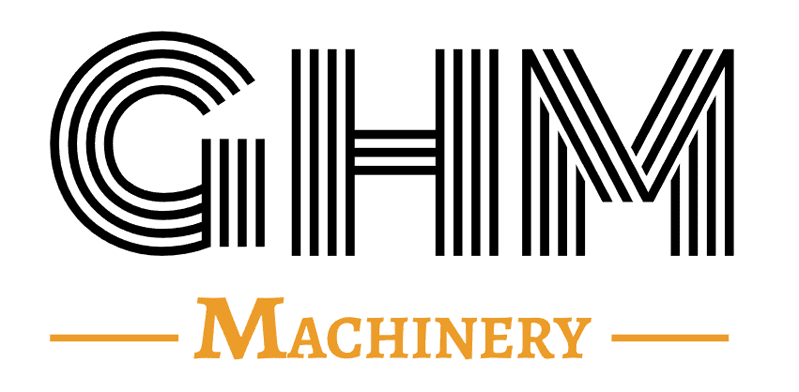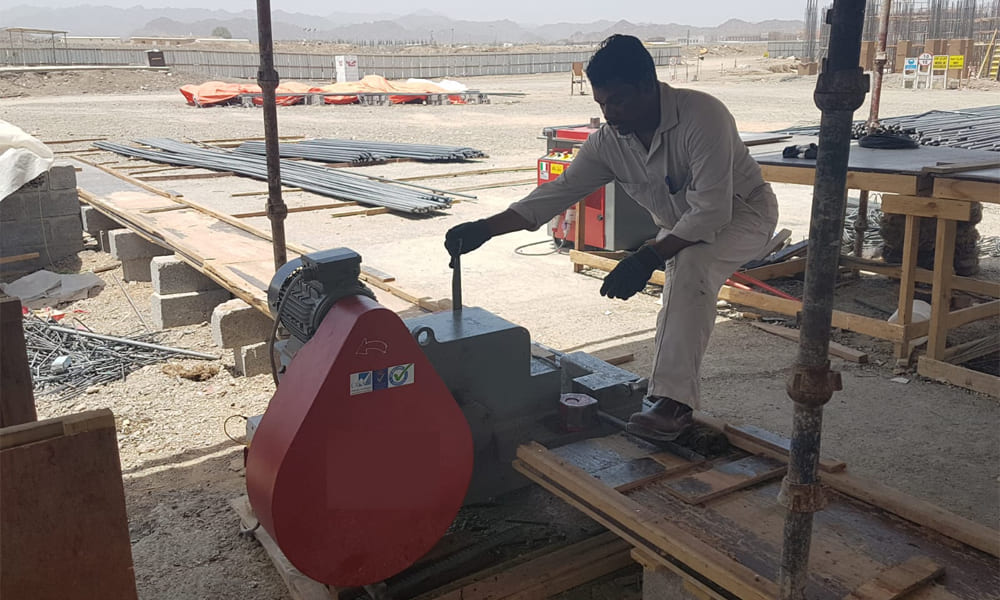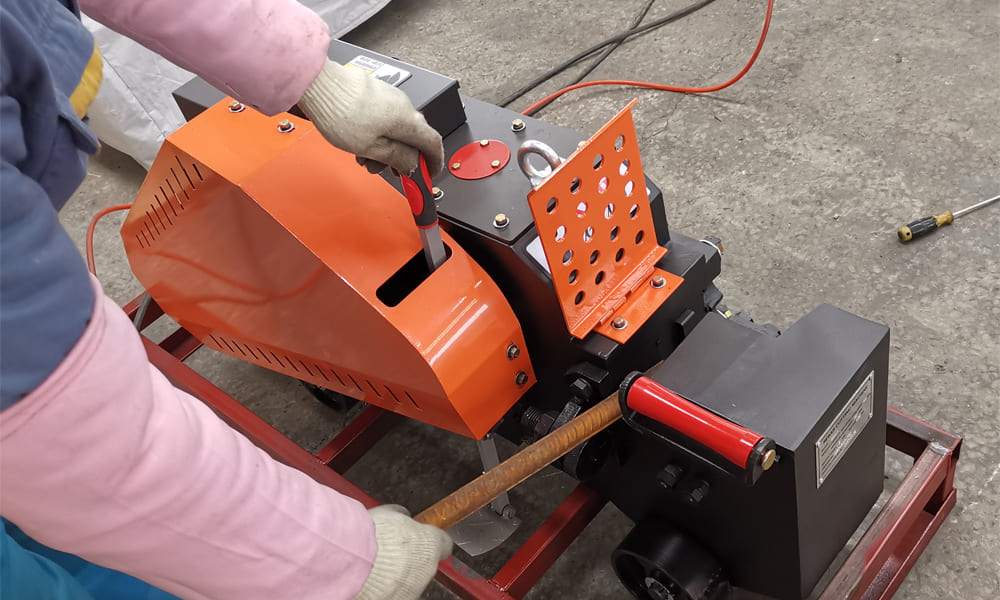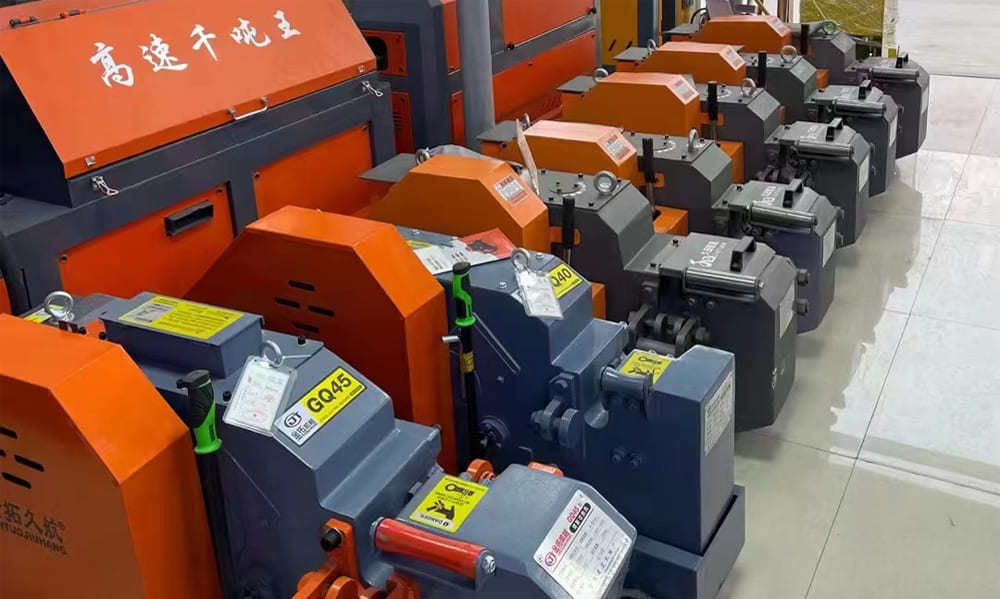Italian Rebar Cutting Machine is a crucial piece of equipment for processing rebar, widely used in construction projects such as residential buildings, bridges, tunnels, power stations, and large-scale water conservancy projects. This machine specializes in the precise cutting of rebar to fixed lengths, offering several advantages over other cutting equipment, including lightweight design, low energy consumption, reliable operation, and high efficiency. Due to these benefits, rebar cutting machines have become increasingly popular in mechanical processing and small steel rolling mills, playing a vital role in various sectors of national economic construction.
Comparison of Domestic and Italian Rebar Cutting Machine
The development of rebar cutting machines has varied significantly between domestic and foreign manufacturers. The following points highlight the differences:
- Eccentric Shaft Design: Foreign machines often feature a larger eccentricity in the eccentric shaft. For instance, Japanese vertical cutting machines have an eccentricity of 24mm, compared to 17mm in domestic machines. While smaller gear structures may save materials, they can cause difficulties in handling different rebar sizes, requiring frequent adjustments to the knife pad, blade, or cutting angle.
- Frame Construction: Foreign cutting machines typically use steel plate welded structures with superior processing accuracy, part roughness, and heat treatment. This results in machines that outperform domestic models in terms of overload resistance, fatigue failure, and wear.
- Blade Design: Domestic machines often feature single-bolt fixed blades with a thinner design (17mm thickness for 40 and 50 blades). In contrast, foreign machines use double-bolt fixed blades with a thickness of 25-27mm, offering better overall performance, including improved force distribution and longer blade life.
- Cutting Speed: Foreign machines generally operate at higher cutting speeds, with 15-20 more cuts per minute than domestic machines, leading to greater efficiency.
- Lubrication and Structure: Foreign models usually have a semi-open structure with gears and bearings lubricated by grease, while domestic machines have varying structures, including fully open, fully closed, and semi-open configurations. Domestic machines use either centralized thin oil lubrication or splash lubrication methods.
- Appearance and Quality: Foreign manufacturers often produce on a larger scale, with high levels of automation, resulting in refined appearance quality and superior overall performance. Their machines feature scientifically designed color schemes, smooth finishes, and an absence of welds, burrs, or sharp corners. In contrast, domestic machines often suffer from outdated production processes, leading to rougher appearance and lower quality.
The Path Forward for Domestic Rebar Cutting Machine Manufacturers
The rapid growth of global economic construction has created significant opportunities for the construction industry and its associated machinery. To remain competitive in this market, domestic manufacturers of rebar cutting machines must focus on several key areas:
- Enhanced Management: Strengthening enterprise management to improve efficiency and product quality.
- Investment in Technology: Increasing investment in research and development to innovate new technologies and products.
- Quality Improvement: Enhancing product quality and after-sales service to better meet user needs.
- Market Responsiveness: Actively engaging with the market to align product offerings with customer demands and close the gap with advanced foreign competitors.
Working Principle of the Italian Rebar Cutting Machine
The rebar cutting machine operates by reducing motor speed through a primary V-belt drive and a secondary gear drive, which then powers the crankshaft. The crankshaft, in turn, drives the connecting rod, causing the slider and moving blade to move back and forth within the machine base’s slideway. This movement allows the movable blade to intersect with the fixed blade, effectively cutting the rebar.
Motor Selection and Transmission Scheme
The rebar cutting machine utilizes a three-stage reduction system, with a primary belt reduction followed by two-stage gear reduction. The primary belt drive is preferred for its benefits, including cushioning, vibration absorption, smooth operation, low noise, and overload protection. The two-stage gear reduction offers reliable power transmission between axes, high efficiency, accurate transmission ratios, and a long service life.
Given the need to convert rotary motion into linear reciprocating motion for the cutting process, a crank slider mechanism is chosen as the machine’s actuator due to its practicality and efficiency.
Friction, Wear, and Lubrication in Rebar Cutting Machines
Friction is an unavoidable natural phenomenon that leads to energy loss, reduced efficiency, increased temperature, noise, and machine performance degradation. In rebar cutting machines, friction primarily occurs in bearings and manifests as both sliding and rolling friction. To mitigate wear and extend machine life, it is essential to focus on the following:
- Lubrication: Ensuring proper lubrication to reduce friction and wear.
- Material Selection: Choosing materials that match the basic wear forms to enhance wear resistance.
- Processing Accuracy: Improving the precision and surface quality of parts to minimize wear.
- Structural Design: Implementing rational structural designs to optimize wear resistance.
- Maintenance: Adopting proper use and maintenance practices to prolong machine life.
Conclusion
This rebar cutting machine design offers a simple, cost-effective solution for rebar processing, with advantages such as low price, space-saving structure, and ease of maintenance. The machine’s operation involves an electric motor driving a crankshaft via belt and gear reductions, which then actuates a slider mechanism to cut the rebar. By utilizing common components, the design achieves a balance between performance and cost, ensuring it meets work requirements efficiently.




